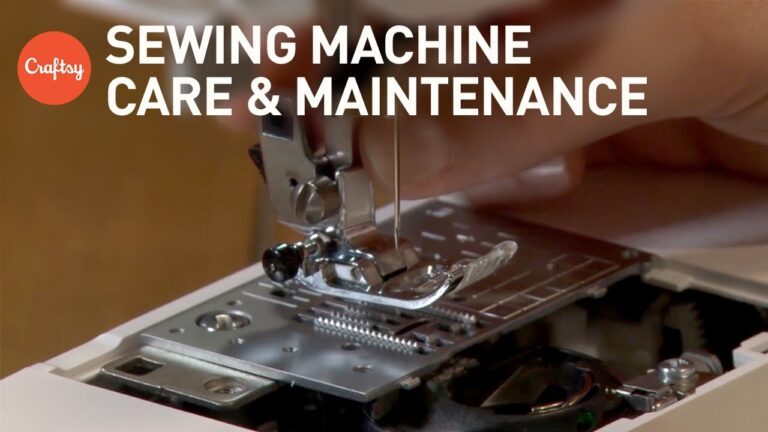Speed Sewing: Time-Saving Techniques and Machine
Settings for Efficient Projects
Are you looking to turbocharge your sewing productivity without sacrificing quality?
Whether you’re a hobbyist with a growing project list or a professional seamstress aiming to increase output, mastering the art of speed sewing can be a game-changer.
In this comprehensive guide, we’ll explore time-saving techniques and optimal machine settings that will help you sew faster and more efficiently, all while maintaining the professional finish your projects deserve.
- Prepare Like a Pro
The key to speed sewing begins before you even touch your machine. Proper preparation can significantly reduce your overall sewing time:
a) Organize Your Workspace: Keep your sewing area tidy and well-organized. Arrange tools within easy reach and use magnetic pin cushions or thread catchers to minimize time spent searching for small items.
b) Pre-wind Multiple Bobbins: Wind several bobbins with your most-used thread colors before starting a project. This eliminates interruptions for bobbin winding mid-project.
c) Cut All Pattern Pieces in Advance: Take time to cut out all pattern pieces before you start sewing. This creates a smooth workflow and prevents frequent stops to cut additional pieces.
d) Batch Similar Tasks: Group similar sewing tasks together. For example, sew all straight seams first, then move on to curves or zippers. This reduces the need to constantly change settings or presser feet.
-
Optimize Your Sewing Machine Settings
Properly configured machine settings can dramatically increase your sewing speed:
a) Adjust Stitch Length: For most straight sewing, increase your stitch length slightly. A length of 3.0-3.5mm can speed up your sewing while maintaining stitch integrity.
b) Increase Presser Foot Pressure: Higher presser foot pressure can help feed fabric more smoothly, allowing for faster sewing without fabric slippage.
c) Use the Needle Up/Down Function: If your machine has this feature, set the needle to stop in the down position. This saves time when pivoting or repositioning fabric.
d) Utilize the Speed Control: Many modern machines have adjustable speed controls. Find the fastest speed at which you can maintain accuracy and comfort.
-
Master Time-Saving Sewing Techniques
Employ these efficient sewing methods to slash your project time:
a) Chain Piecing: When sewing multiple similar pieces, feed them through the machine one after another without cutting threads between pieces. This technique is particularly useful for quilting and garment construction.
b) Sew Seams in One Direction: Whenever possible, sew all seams in the same direction without removing the fabric from the machine. This reduces handling time and maintains better control.
c) Use the “Burrito” Method: For tasks like attaching facings or linings, roll the main fabric around the smaller piece before sewing.
This technique, often called the “burrito method,” allows you to sew the entire seam in one pass.
d) Finger Press as You Go: For many seams, a quick finger press can replace the need for ironing. This saves time and trips to the ironing board.
-
Invest in Time-Saving Tools and Notions
The right tools can significantly speed up your sewing process:
a) Rotary Cutter and Self-Healing Mat: These tools make cutting fabric much faster and more accurate than scissors, especially for straight lines and large pieces.
b) Wonder Clips: Replace pins with wonder clips for faster fabric handling, especially with thick materials or layers.
c) Edge-Joining Foot: This specialty presser foot helps maintain perfect seam allowances without constant measuring, speeding up straight seams and topstitching.
d) Walking Foot: For quilting or working with multiple layers, a walking foot can dramatically increase your sewing speed by preventing fabric shifting.
-
Streamline Your Pressing Process
Efficient pressing is crucial for speed sewing:
a) Use a Press Cloth: A press cloth allows you to iron at higher temperatures without fear of scorching, speeding up the pressing process.
b) Invest in a Good Iron: A high-quality iron with strong steam output can press fabrics more quickly and effectively.
c) Press in Batches: Group pressing tasks together to minimize trips to the ironing board. Press all open seams at once, then all hems, etc.
-
Practice and Build Muscle Memory
Like any skill, speed sewing improves with practice:
a) Start Slow: Begin by focusing on accuracy at a comfortable speed. As you become more confident, gradually increase your pace.
b) Use Scrap Fabric: Practice new techniques or challenging seams on scrap fabric before tackling your actual project.
c) Time Yourself: Set time goals for specific tasks and try to beat your previous times while maintaining quality.
-
Maintain Your Machine
A well-maintained machine is crucial for speed sewing:
a) Regular Cleaning: Clean your machine after every project to prevent lint buildup that can slow performance.
b) Timely Oiling: Keep your machine well-oiled according to the manufacturer’s instructions to ensure smooth operation at high speeds.
c) Professional Servicing: Schedule regular professional servicing to keep your machine in top condition for speed sewing.
By implementing these speed sewing techniques and optimizing your machine settings, you’ll be able to complete projects faster without compromising on quality.
Remember, the key to efficient sewing is a combination of preparation, practice, and the right tools. As you incorporate these tips into your sewing routine, you’ll find your productivity soaring and your project turnaround time significantly reduced.
FAQ Section:
Q1: Can speed sewing affect the quality of my projects?
A1: When done correctly, speed sewing should not compromise quality.
Focus on accuracy first, then gradually increase your speed as you become more comfortable with the techniques.
Q2: What’s the most important factor in speed sewing?
A2: Proper preparation is crucial.
Organizing your workspace, pre-cutting fabric, and planning your sewing sequence can significantly reduce overall project time.
Q3: Are there any fabrics that aren’t suitable for speed sewing?
A3: While most fabrics can be sewn quickly with practice, delicate or slippery fabrics like silk or chiffon may require a slower pace for best results.
Q4: How can I increase my sewing speed without feeling overwhelmed?
A4: Start by incorporating one or two speed sewing techniques at a time. As these become second nature, add more techniques to your repertoire.
Q5: Is it worth investing in a faster sewing machine for speed sewing?
A5: While a faster machine can help, technique and preparation are more important. Most modern domestic machines are capable of speed sewing with the right approach.
By incorporating these speed sewing techniques and optimizing your machine settings, you’ll be able to tackle your sewing projects with newfound efficiency.
Remember, practice makes perfect, so don’t be discouraged if you don’t see immediate results. With time and persistence, you’ll be sewing at lightning speed while still producing beautiful, high-quality work.
Related Posts
Discover relevant articles, tutorials, and tips to improve your skills and explore new techniques.
Stay inspired and connected to our embroidery community.






